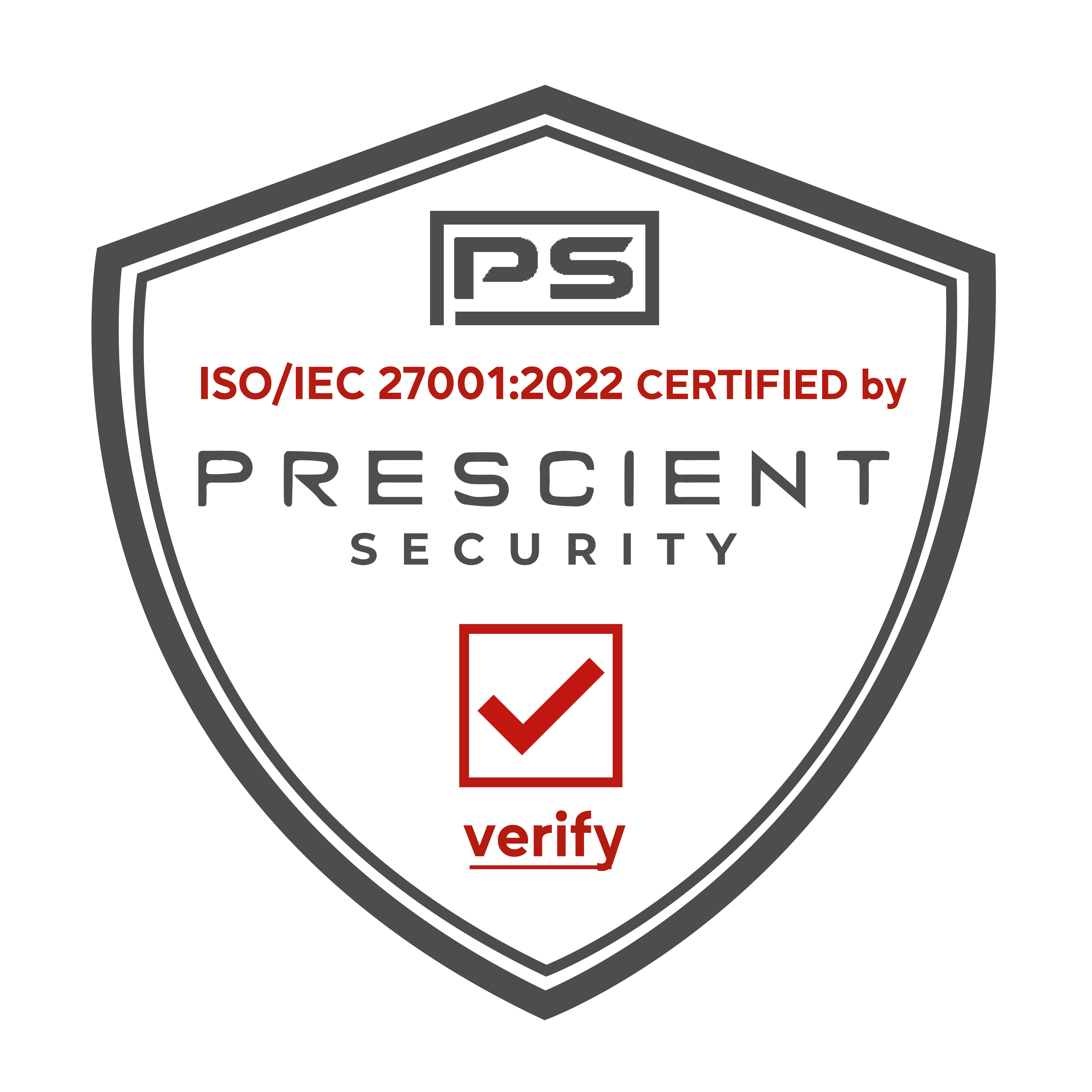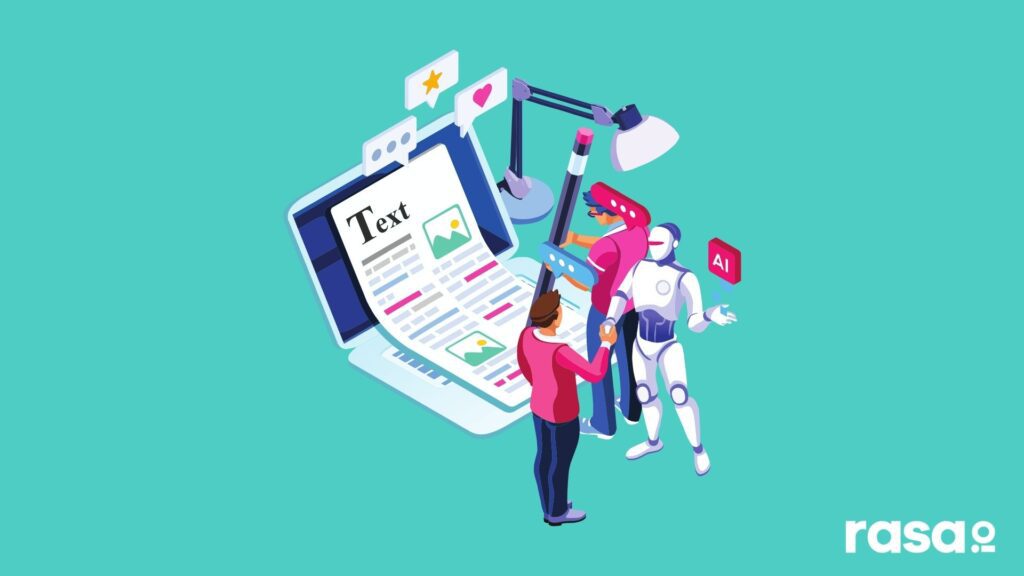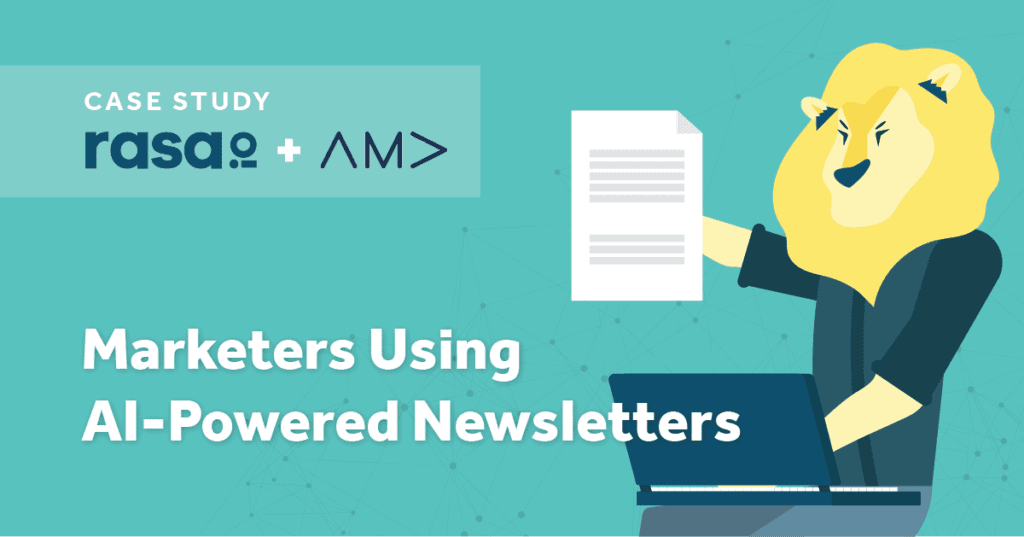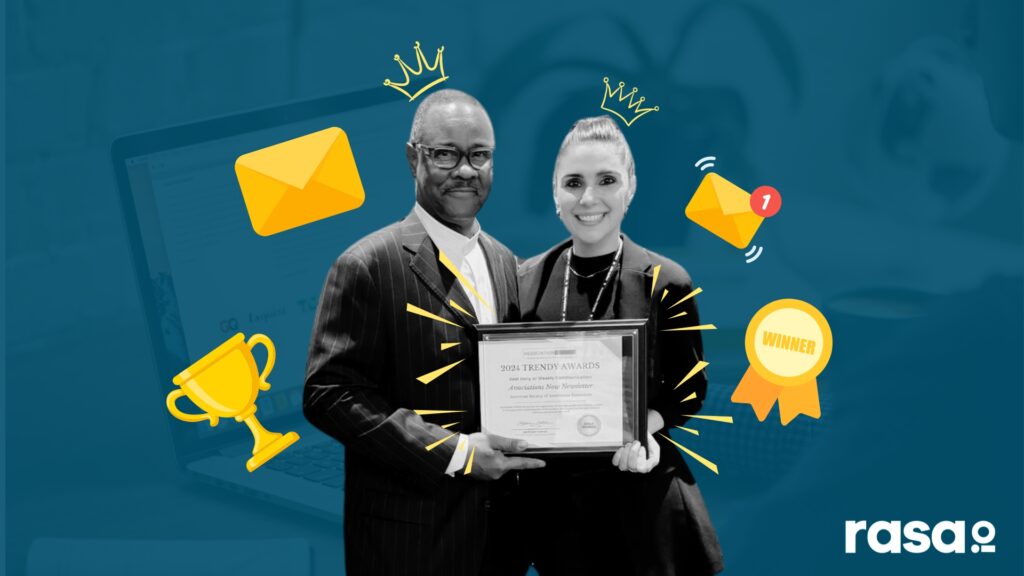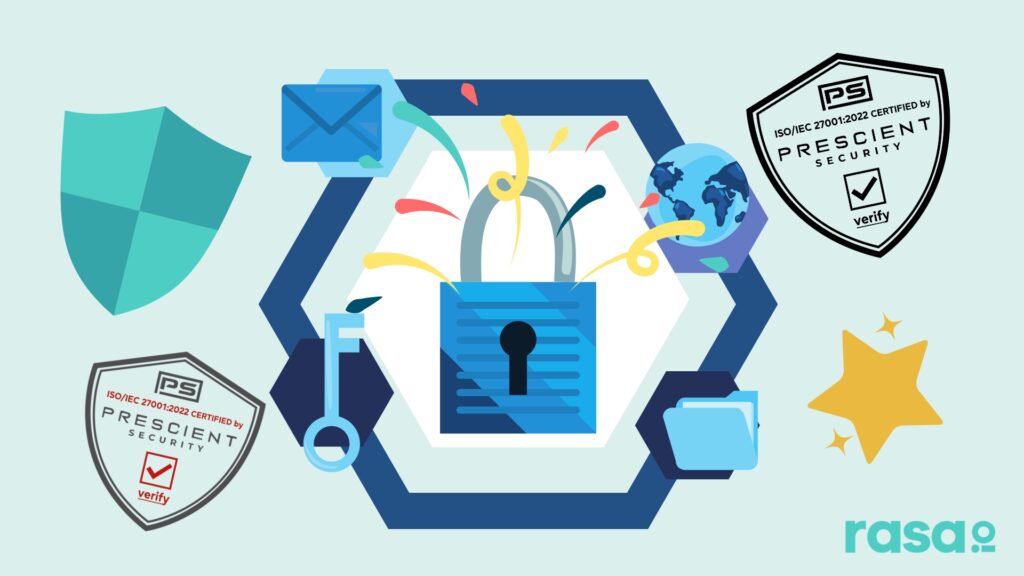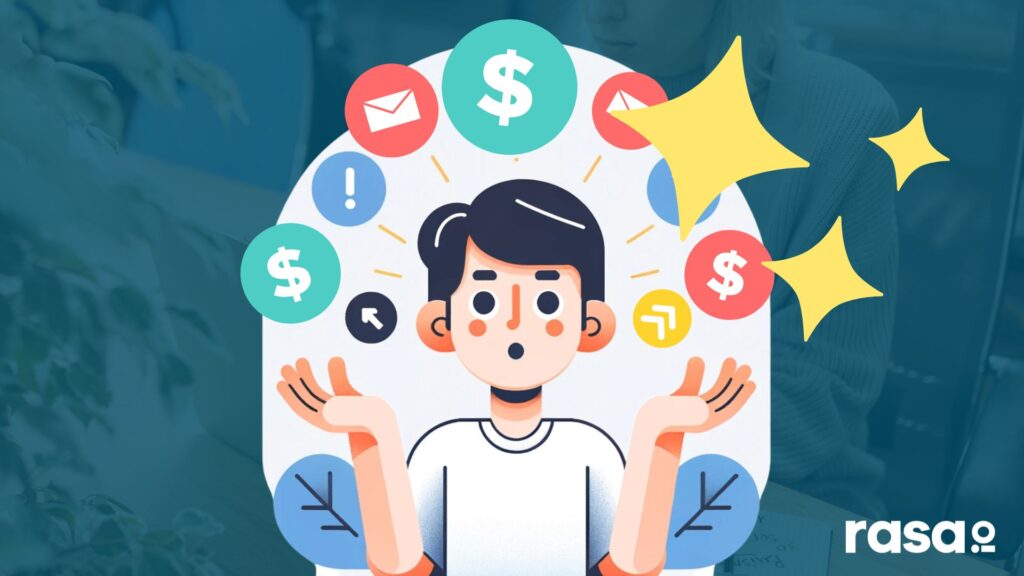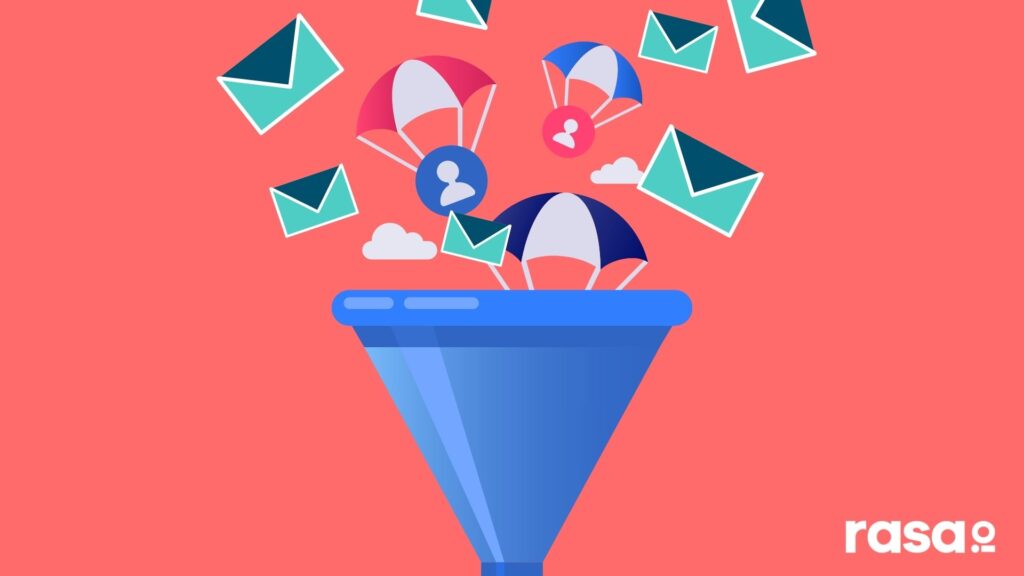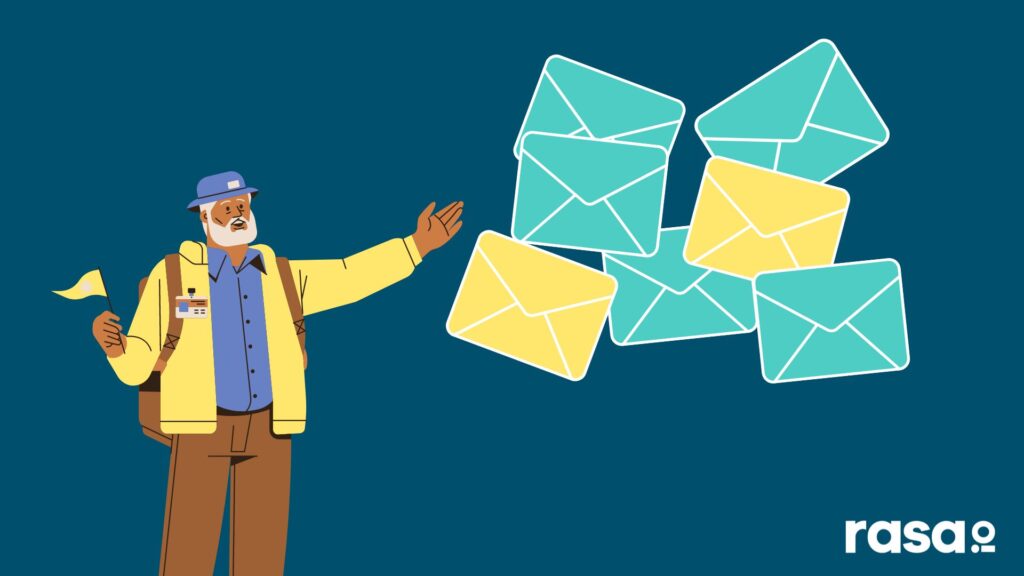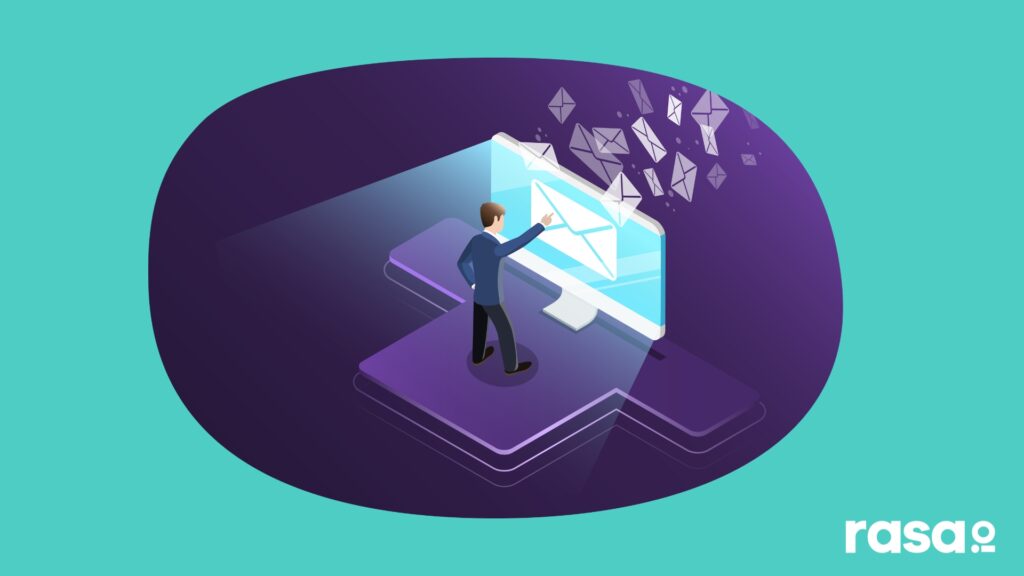John Lee Dumas
Ever wonder how you can use your email newsletter to move audience members from passive listening to deeper engagement? Today’s guest, a prolific business podcaster, John Lee Dumas, shares his earliest experience sending an email newsletter and how he used it to grow his online platform.
John is the founder and host of the award-winning Entrepreneurs On Fire Podcast where he interviews inspiring entrepreneurs to help them on their entrepreneurial journeys. He has interviewed over 2,000 incredible entrepreneurs, including Tony Robbins, Seth Godin, Gary Vaynerchuk, Barbara Corcoran, Tim Ferriss, and many more. In today’s episode, we talk all about John’s initial email Newsletter experience and how it has evolved through the years. We also discuss how John has used different avenues to grow his email list, the importance of capturing emails, and how John applied what he observed from other podcasters to his own email communication stream to help grow his business. Stay tuned for an insightful conversation with John Lee Dumas on turning your listeners into subscribers.
Key Points From This Episode:
- How long John has been publishing their Entrepreneurs On Fire email Newsletter.
- The specific content and what the newsletter looked like and sound like back then.
- What email responses looked like and why it was different than it is today.
- How John handled the long email responses and deep engagement from listeners.
- What John believes is the difference between emails and the podcast.
- The importance of capturing emails from your podcast audience for growth.
- How John applied what he had learned from other podcasters to his email communication.
- John shares his initial lead magnet to grow his email list.
- How John incorporated his courses to grow his email list.
- John’s approach to keeping his brand authentic to his own personality and voice.
- What his business and day-to-day look like today.
How Effective is Email Marketing?
Email marketing is as effective as you make it to be. If you’re spamming your subscriber list daily with hard selling and no value, it won’t work.
But, if you’re creating great content and giving your subscribers useful information, your email list can be the backbone of your business.
Like anything, your email marketing strategy requires a lot of thought, strategy, and hard work. It’s not as simple as just getting subscribers to sign up. You need those subscribers to also engage and interact with the content you’re sending them.
If you appreciate the process and time it takes to build a good email marketing campaign, it can pay back in dividends for a very long time. One great email marketing funnel can keep working for years, adding more subscribers, and selling more of your product or service.
You have to put the time and effort into developing the best email marketing campaign for your unique subscribers. What works for one company might not work for you. Learning how to create an email newsletter is a journey; it won’t happen overnight.
Email Newsletters Stats
How effective is email marketing? Pretty effective it turns out. Below are some email newsletters stats to check out before creating your email newsletters and taking the advice in this article.
Email marketing generates $38 for every $1 spent, that’s a 3,800% ROI.
- 73% of millennials prefer communication from businesses to come from emails.
- 35% of business people check their email on their mobile devices.
- 78% of marketers have seen an increase in email engagement over the last 12 months.
- 59% of people say business emails influence their purchase decision.
- Businesses that segment their email subscribers see a 760% increase in engagement.
- 59% of marketers say email is their most significant source of ROI.
Email marketing effectiveness can be achieved if used correctly. Knowing how to formulate an email campaign and decide on the content to use is key to creating successful email newsletters.
Benefits of weekly email newsletters
Any business or marketer with thriving weekly email newsletters will tell you just how important it is for business. Here are five benefits of having weekly email newsletters.
Quality Communication
Weekly email newsletters allow you to connect with your customers directly via email. It’s the opportunity to get your customer’s attention and share important news, information, and offers.
Your weekly email newsletters can be a source of knowledge or an educational tool for your subscribers. Over time, this builds trust between your customers and your business, allowing for more opportunity to promote any products or services you may have.
When learning how to create email newsletters, you will quickly learn that the aim is not just for selling. It should be treated as a channel to build a relationship with your customers directly too.
Building Credibility
You can establish credibility with your customers by having open and honest communication with them. Your emails are a chance to show you care about your customers, and you’re not just in it to sell them lots of things.
Excellent email newsletters are about connection, not hard selling. Give your customers information on your business’s progress, offer them the information they can use, spark their interest, and give them a slice of your personality.
Instant Impact
Emails take seconds to land in your customer’s inbox, and you can get access to instant analytics and (sometimes) feedback. This means you can quickly roll out special offers or get your latest guide out there instantly.
Other marketing activities can take weeks to see the benefits, whereas you can get instant results from emails. And you know that it was the email that directly created those results.
The Power of Sharing
Not only can you reach millions of people within seconds, but those recipients can also forward your email on. If you create great content and offer great deals, your subscribers quickly become some of your best salespeople.
One-click of a button and your subscribers can forward your content to their friends and family. Then those people may join your email list too and then start sharing future emails. This can quickly snowball into substantial subscriber numbers.
Learn About Your Customers
After a few weeks or months into an email campaign, you can start to notice patterns in engagement. Analytics can help you see which content your subscribers are enjoying and what they choose to ignore.
That information and feedback can help you start to tweak your content, allowing you to optimize your email campaign for better success. You should begin to see what offers and deals are attractive and which are uninteresting.
It’s Easy
Thanks to email software like MailChimp and HubSpot, building an email list, creating emails, and sending them has never been easier. These email gurus have developed software specifically for your email marketing needs.
Once you get used to them and learn more about them, your email marketing can become more powerful and automated. You can start to create fantastic content weeks in advance and organize everything ready to send email newsletters at specific times and dates.
Targeting Content
Modern-day email software can help you to identify different types of customers in your email list. You may find that some of your customers prefer one type of offer, and other customers prefer another style. You can then segment these customers into separate lists, sending weekly newsletters to them with different content that appeal to them.
Other segmentation may be based on their age group, gender, interests, number of times they have bought from your business, etc. The more you target and give your customer exactly what they want in their inbox, the better engagement and ROI you will achieve.
Reach an Engaged Audience
Remember, people that have already signed up for your email newsletters are already interested in your business, product, or service. People ask you to send them content about your business. Where else does that happen in marketing?
Sharing content with people that are already engaged helps increase your conversion rate. It’s your job to ensure that now they have signed up, you will reward them with content, offers, and information that they find useful.
A word of warning, never buy email liars and send unsolicited emails to people. This is a quick way to lose all credibility for your business. Grow your email list organically by giving people great content.
It’s Cheap
Buying into email software and creating newsletters is cheap. You can find a solution for any business size and at a cost that is reasonable for you. Compared to mainstream media buying, email marketing is incredibly cheaper.
There are no ads to design, no print, no postage fees, no advertising agency costs for billboards or TV airtime. Investing in specialist email marketing can be made affordable and is very easy to scale up when the time is right.
Increase in Revenue
That’s the aim of the game, right? You want to drive new revenue for your business. Well, email newsletters can do this. $29bn in revenue is generated by emails each year.
Email marketing takes advantage of impulse buying, as well as the gradual building of customer loyalty. In just one email, your customers can see an offer and buy the product in a couple of clicks. No other marketing platform does this.
Done right, emails can be the backbone of your yearly revenue for years to come.
What is an email strategy?
An email strategy is a procedure set out, usually by a marketer, to achieve an email marketing campaign’s desired goals.
In other words, it’s the plan to help your email campaign be successful. Having an email strategy is of the utmost importance. Without a strategy, email marketing quickly becomes confusing, overwhelming, hard work, and yields very little.
With a strategy, you can map out all the individual or series of emails that you wish to send. You can assign a different email to your audience segments and ensure that every email sent is going to someone who will appreciate it.
The more specific and focused your email strategy, the more likely it is to be a success. It can also make you and your employees’ lives a lot easier. An email strategy keeps everything organized, focused, and on time.
Once you have established a strategy, it’s then easy to monitor and tweak as necessary. The more you analyze and tweak, the more solid your email strategy becomes, and the more value your customers receive from being on the subscriber list.
Don’t go into email marketing without a strategy. Know your goals, segment your audience, design great content, plan it out, and automate it using email software.
What are the strategies and the best tips for email marketing?
There are thousands of different email marketing strategies to help you build your effective email marketing campaigns. There is no one rule for all. Email marketing is a process of sending the email, learning what works, learning what doesn’t, and optimizing until you get it right.
That said, some email marketing strategy tips will help you start the process and allow you to hit the ground running.
Know Your Target Audience
This is crucial because if you don’t know who your audience is, how can you create engaging content they will love. Understanding who your audience is requires a lot of homework.
Develop a specific focus on who your current subscribers are and the potential subscribers that you want. Also, look at the types of people following you on social media and engaging with your content across your channels.
Once you feel like you understand your target audience better, you need to look at the type of content they engage with. Look at what past emails have been the most successful and which social media posts got the most engagement and shares.
There is an element of trial and error in discovering your target audience. It’s essential to learn from the analytics from the content you have already shared. Take note of what worked and what didn’t, then tweak the content and see if it performs better.
Create Quality Content
Your email campaigns will not be successful unless you create quality content. What that quality content looks like will depend on who your targeted audience is. Once a person agrees to receive email newsletters from you, you enter a social contract. You send them excellent quality content, and they may buy your products or services as a result.
If you fail to create engaging quality content, why should that person stay subscribed? They shouldn’t, so they will unsubscribe. How do you create quality content?
Plan Your Email Campaigns
Sending random emails each week that aren’t in any way connected or following a type of order is not received well. Choose topics to focus on, use a calendar or software to plan each email, draft all the content, and have it ready to go. Keep it consistent and the content valuable.
Add Value
Adding value is critical to the success of your email campaigns. Your value is what your customers are getting out of your emails. This could be in the form of a free guide, a new offer, discounts, competitions, giveaways, new product launch info, etc. Your value is the reason they will click and engage. It has to be interesting when your customers probably receive fifty emails a day from other companies.
Get Creative
Get creative and if you’re not creative, hire someone who is. Your email should be designed well, including high-res images, good readability, simple layout, and nice fonts. The message and calls to action should be clear enough for a six-year-old to understand.
There are many resources online that go into great detail about how to optimize your email for high engagement. Study them and apply the tips, then monitor the performance. Tweak where necessary.
Subject Line
The subject line is critical to the success of an email. It’s the first thing people see when a notification pops up on their mobile device or inbox. If it isn’t exciting or attractive, the email will go unread.
But, you can’t make it too attractive either. Some people will fill a subject line with exclamation marks, excellent sales prices, and even emojis. This type of email will head straight for your customers’ spam and never be seen again.
Creating engaging spam-proof subject lines is an art, and it takes time to develop. Research shows that 47% of recipients open an email solely because of the subject line it was delivered with.
Make your subject line brief and concise. It should be benefit-driven, and terms like “discount offers” and “flash sale” are known to be effective. Engage a first-person narrative and create a sense of urgency and inquisition.
The subject lines that work for your particular business will vary. Take the time to study past emails and see which styles worked best until you have a clear picture of the most compelling subject lines for you and your customers.
Get Interactive
Interactiveness is what drives response in your emails. To do this, you need to create a calls to action. All emails sent to your customers should end with calls to action (CTA). This could be to take advantage of a sale, sign up for a free webinar, claim your 20% off, and so on.
Your CTA is the reward for the customer reading the email. When marketing anything for your business, it’s good to think, “what are my customers getting out of this?”. With that in mind, you can create content that is of value.
Other types of CTAs may include completing a survey in return to win a product or service. To give you feedback on a particular product for a discount on future purchases. Get creative with your CTAs and think about what your customers would like to receive in return for their engagement.
Make it Mobile-Friendly
As stated earlier, just under half of all people receiving emails open them with their mobile devices. It’s important then to ensure that your emails are optimized for mobile and tablet devices. Having a glitchy mobile version that cuts information off or doesn’t load quickly enough will cut your chances of engagement by half.
If you don’t know how to make your emails mobile-friendly, seek professional help so you can get it fixed quickly. Most of the top email software products include an easy to adopt mobile-friendly version, so you don’t have to worry about it. But, always test it just in case.
Other Top Tips
Above are the main tips to focus on for excellent email marketing. Here are some other and possibly obvious tips for email marketing:
- Don’t spam!
- Customize your emails and segment your audience.
- Use dynamic information to make the email personal and up to date.
- Use AI to help automate your email campaigns and reduce your workload.
- Conduct A/B Testing to keep up to date with the latest email trends and engagement.
What are the four types of marketing emails?
There are four main types of emails that are sent to customers as part of an email campaign.
Broadcast
This is an email to everyone on your subscriber list, whether it is 1,000 or 10 million people. A broadcast is useful for product launches, hosting customer events, and essential updates on operations.
For example, over the last few months, you will have no doubt received emails about how a business is coping with COVID-19, including disruption to operations, shipping, and customer service.
Within a few minutes, all your customers can be simultaneously updated using a broadcast email.
Scheduled
Scheduled emails are typically reserved for important days, such as a birthday or national observances (i.e., Earth Day). This is great for offering unique offers to people on special days and makes customers feel wanted and appreciated.
For example, you set up a birthday email for every one of your customers (assuming you have their birthday date). Each customer gets an email on their birthday with a 10% off voucher for being such a great customer and supporting your business.
Autoresponders
Autoresponders are highly effective and useful for business communication. These emails let customers know when they have successfully joined your mail list, ordered a new product, or that their product has now been shipped.
Triggered
The potential of triggered emails is unlimited, which is why they’re becoming increasingly popular with marketers. Let’s say you have a segregated email list for people who specifically go all the way to check out on your website and then exit for some unknown reason.
You can then prompt that person with an email to remind them they didn’t finish checking out. The effectiveness of triggered emails is high. It serves as a gentle reminder and maybe even a final push into purchasing your product or service.
Other examples of triggered emails include:
A series of emails specifically for people who signed up to the email newsletters but have not yet bought anything. When signing up, a series of emails gradually introduce them to the company and what you do, including offers and discounts.
- Emails specifically for men who have browsed the sales page but have not purchased anything yet.
There are so many possibilities for triggered emails, and with the latest software, you can make them very specific and targeted to get the best results possible.
How to create an email newsletter
When creating an email newsletter, it worth noting that the process will differ depending on the software you’re using and the type of marketing email you require (look at the four types above).
The first thing to do is learn how to create email newsletters with your specific email provider, whether MailChimp, Hubspot, or any other provider. They all have guidance on their websites on how to use their particular software.
If you don’t have the time to learn how to create emails, then hire someone to do it for you. You can ask your marketing agency or find an email marketing specialist online. You will save a ton of time, and it will give you more time to focus on the actual content.
Tips for Running a Long and Successful Email Newsletters
Knowing how to create excellent marketing email and email strategies are just half of the work. The real key to successful email marketing is to stay consistent. Here are some top tips from John Lee Dumas on how to do just that.
Trial and Error
Your marketing emails are never going to be perfect, nor will they always be successful. It’s essential to learn from previous emails and their performance continually. Using analytics and conversion rates, you can start to develop an idea of what works and what doesn’t.
But, the world is always changing, and so are customers with what they want. Always be open to learning new ways of doing email marketing and communicating the most effective with your customers.
Not evolving leaves your business static, and eventually, customers will get tired of the same old information, email designs, CTAs, and even imagery. Analytics and feedback are your two best friends in email marketing. Use them wisely and effectively to keep things fresh and engaging at all times.
Respond to Your Customers
Emails are a two-way system. Customers can (and they will) respond to your emails. When they do, you or your employees must respond promptly.
Customers want to be heard and feel appreciated. Taking the time to respond is an act of respect. However, as your list grows, the replies may also increase, and you don’t want to get swamped by emails replies all day.
If you find yourself in this situation, make your replies short, concise, respectful, and polite. Customers will appreciate that you don’t have time to get back with a lengthy response.
Learn from the Best and the Competition
The beautiful thing about email marketing is it’s easy to see how others do it. Sign yourself up to other people’s or business emails to get some insight into how they do it.
Pick email newsletters, which you know are hugely successful already. Each time you get an email from that person or business, note what they did and get inspired for your email.
Don’t be afraid to learn from your competition, either. It’s a great place to start, and you will learn a lot about how they engage their customers. Then you can begin to spot ways in which you could make it even better and more engaging for your email newsletters.
Create an Effective Lead Magnet
Why would anyone join your email list in the first place? What will persuade people to give you their email address and allow you to contact them?
Your magnet lead is crucial for this reason. You will need to offer potential subscribers something worth handing over their email. This could include:
- A discount code.
- A free guide to something they would value.
- Entry into a competition or giveaway.
- A free ebook.
- A free 30-minute consultation.
Whatever you decide to use as a lead magnet, make sure it’s something people will be enticed by.
Start a Podcast
If you don’t already have a podcast, then think about starting one. What could your business discuss that would gain a following? Creating a podcast, opening important conversations about your industry, and speaking to the prominent figures within it can make for entertaining listening.
Once your podcast grows in popularity, your listeners can easily be persuaded to join your email newsletters. Then you can start to grow your list, target subscribers with great content, and increase sales.
Create Multiple Funnels
There is more than one way to get someone to subscribe to your email newsletters or buy your product. With so many platforms and channels at your disposal, it’s essential to create a mix of funnels that all guide your customer to the same goals. This could be to sign up for the email newsletters or buy a product.
Funnels are also referred to as the “Buyer’s Journey” or how to get your customers from the point of interest to a decision to buy. The journey between these two points can be very different and depend on what marketing channels you have available to you.
The primary funnel has four stages:
Awareness
Awareness is the initial spark that generates interest in a prospective customer. This typically includes marketing activities like:
- Paid advertising on the website.
- Influencers sharing your product with their followers.
- A blog post on your website.
- Social media posts.
- General SEO tactics that bring people to your website organically.
- Video content on YouTube or Vimeo.
Interest
Now your prospective customers are aware of you and your product/service. It would help if you sparked some interest. This may include:
- Sharing content on social media.
- Engaging people with blog posts about interesting topics.
- Creating guides, ebooks, or “how-to” articles.
Desire
This stage is dedicated to providing interested prospective customers with more detail about your products or service. It’s also when the prospective customers start to compare you against your competition. This typically includes:
- Product reviews.
- Free trials or demos (services only).
- Ebooks or case studies.
Action
This the final stage of the buyer’s journey and your funnel. Prospective customers will now make their choice to purchase from you or not. To clinch the sale, you will need:
- An offer or discount code.
- Website visitors are directed to the product or service pages.
- Create urgency (limited time price or offer).
It’s vital to ensure that your email list is at the center of all the above activities. This will give prospective customers multiple chances to join your subscriber list.
Study Analytics
When it comes to email marketing, your analytics are incredibly important. Email analytics can tell you how your content performs or gives you an overview of an entire email campaign’s performance.
Studying analytics will help you and your team understand what you’re doing right and what isn’t working. You can then start to tweak the content, subject line, style, layout, imagery, segmentation, and more to create more effective marketing emails.
Keep learning from the analytics, and eventually, you will end up with a recipe for success.
Don’t Worry About Email Frequency.
There is no magic frequency for sending emails. Some successful businesses email once a week, and others email every single day of the week. It depends on the type of people receiving your email and the content you’re putting out there.
It is also dependent on your type of business. Rather than sticking to one frequency for sending emails, try different strategies, and see which one produces the best results. You may lose a few subscribers in the process, but at least you’ll know better.
Final Thoughts
Creating and sustaining an email marketing list can be one of the most lucrative and joyful ventures for a business. Do it right, and you can keep the customers flowing to your website and building your credibility along the way.
Implement the best practices, be consistent, review your analytics frequently, and tweak accordingly. Eventually, you will find the perfect process for your customers and have promising email marketing campaigns from then on. One that will pay back in dividends for many years to come.
John Lee Dumas is one of the world’s leading podcasters. Let him teach you proven ways on starting a new podcast and how to maintain it. Take action on pursuing your goals and learn how to successfully grow your podcast!
Tweetables:
“Email has been like my lifeblood into my audience because I get over a million listens of the podcast a month and podcasting is a very passive form of consuming content.” — @johnleedumas
“You’ve got to be really intentional. Email gave me a direct link to their lives by pressing the send button and getting the content straight to their inbox.” — @johnleedumas
“Sometimes with podcasting — you are absolutely speaking to a black hole and sometimes you wonder, ‘Do these people exist?’ Because you don’t often hear from them, they’re not engaging — and that’s one of podcaster’s biggest struggles.” — @johnleedumas
“You own your email list. Build your email list!” — @johnleedumas
Links Mentioned in Today’s Episode:
Episode Transcript
John:
Email has been like my lifeblood into my audience because I get over a million listings of the podcast a month and podcasting, it’s just a very passive form of consuming content. There’s no easy way to respond. Like you’ve got to really be intentional and to get home from whatever activity you were doing after listening to the podcast and the load of your computer and go to that person’s website, find what you want to do in the contact form and do all these different things. Whereas with email like that just gave me this direct link of being like, you know what? I’m going to reach into your lives by pressing the send button. And you are going to get this content into your inbox. I don’t have to wait for you to press a play button on your podcast player to hear from me.
Bryan:
From rasa.io, the free tool for sending smarter and better email newsletters. This is Pushing Send a show, featuring people who send emails. Their subscribers actually want to read. I’m Bryan Kelly and on today’s show how one prolific business podcaster with over 2000 published episodes and 1 million downloads per month utilized his email newsletter to move audience members from passive listening to deeper engagement. Here’s John Lee Dumas sharing his earliest experience, sending an email newsletter. How long have you been publishing the fire nation email newsletter that accompanies your entrepreneurs on fire podcast? Since the very start?
John:
Yeah, I launched it from the very beginning. I can still remember so clearly like setting up my, a Weber campaign being so confused. It was so different and janky and just like all over the place. And that first email went out and I was like, Oh my God, like I just sent an email to like 34 people. That’s unbelievable. And then I remember, so clearly I got my first unsubscribe and I was like, so debt I’m like, why would somebody unsubscribe? I worked so hard in that email. And then like, I went to like, look at the reason why they unsubscribed was they collected, leave it. And the person just wrote something like, no worries. I subscribed with two email addresses by accident. And I was like, Oh, vindication. I’m so thankful that it wasn’t something that I wrote.
Bryan:
What was the specific content you were sending back then? What did it look like? What did it sound like?
John:
Back then? It was really raw. Like it was just me being out there saying, Hey, this is what I’m doing. This is what I’m trying. These are things that I’m screwing up. And there is an endless amount of content there for emails, for sure. It was really just kind of me throwing a ton of pieces of wet pasta at a wall. And a couple of them would stick and I’d be like, Oh, that email kind of connected with people was I would see the open rates from the subject line or like the click through rates. And I would really just try to start to piece things together. And every time I had a dud, I would take note of why that was a dud and why that didn’t work. And slowly but surely, I was just kind of understanding what at least my audience was looking for, what they wanted, what they needed from email.
Bryan:
Do you remember any of the early email replies you were receiving from people as you started growing your business?
John:
One thing that really surprised me when I was getting my first initial email replies was the length of them, like how long people were replying, because I was just assuming that people were going to kind of read these emails, maybe give like a one or two word reply, if that at all. But back in 2012, I mean, there just wasn’t this massive proliferation of spammy email and just everybody having a newsletter and all this and that like every single day of the week overload, like it wasn’t like 1998 when Gary Vaynerchuk talks about 90% open rates, but it wasn’t 2020 either when, you know, we’re just like so overloaded with everything from every direction. So what surprised me was the length of some of the emails that I would get. Like, I can remember this one person just replying to me and literally it was pages and pages. And I was like, Ooh, look at this. I mean, like, I want responses like this, but at the same time, this is going to take me like half an hour to read. And it was just crazy to me that one person was spent so much time knowing that they were just emailing one person. Like I got the fact that when I got up to like a few thousand emails, but I was spending a lot of time on because this going out to a few thousand people, but this person either replying to one person, I just couldn’t believe like the intimacy and the time the energy you’re putting into replying to just meet just one person. And I was really, really surprised. And then I kind of felt obligated to go in depth with my response as well. So not only the time to me writing the initial email and then getting this unbelievably lengthy response and then having to read it and then having to respond to it. I’m like, man, I think I may have to like stop podcasting and just start responding to emails. This is all I have time for.
Bryan:
Well, it’s incredible to get that type of deep engagement from subscribers, but it’s clear how overwhelming that might be too. So how did you handle those messages?
John:
So I responded and I did realize that it was one of those things where if I really went with a lengthy in depth response, that I would just continue this kind of communication. So I did have to learn, even though if it seems like it wasn’t the kindest thing to do to be very grateful and thankful for the person upfront, of course, for emailing me, but at the end of the day, very short, somewhat terse and really, and realistically like an obvious close to the conversation by being like so best of luck, everything and thank you for listening and yada yada yada. So that was something that I realized I had to do where I just couldn’t become like this individual who was sending out a thousand emails on a broadcast and then spending hours and hours and hours handcrafting, these replies, it was just kind of now turning into kind of like this pen pal relationship type of thing. So that was a lesson I definitely learned early on that, you know, there’s definitely some people out there that rightfully so look at email as a very intimate form of communication. And a lot of them find it easy or either get on a roll and just start sharing their life story. And you know, a lot of them want to kind of keep that communication going.
Bryan:
Your success is built on the deep relationship with your podcast audience. So, how you’re utilizing email is really interesting. What do you feel is the difference between email and the podcast ?
John:
You are getting like sometimes instant responses from people who are just going in depth and really sharing a lot of things where sometimes with podcasting, like you are absolutely speaking to a black hole and sometimes you wonder like, yeah, I’m seeing the lessons in the dollar numbers, but do these people exist because I’m not really hearing from them. They’re not engaging. And that’s one of Podcaster’s biggest struggles is sometimes they feel like they’re speaking into a void and they’re not getting that feedback because it’s just a different way of communication. Like when you’re listening to a podcast, you’re driving in a car, you’re crushing it, the gym you’re walking your dog, there’s no reply button right there. Like you have to actually be very intentional at a time in the future to go and respond to somebody. And that usually life takes over. But when you’re sitting in front of your computer, reading an email and there’s that reply button that you can click right there, that’s a really easy and quick way to just be like, yeah, I’m just gonna reply right now. And boom, off to the races.
Bryan:
When we come back, John describes how folks like Pat Flynn from the smart, passive income podcast were major influence when it came to handling email. Plus John explains why he still writes his email newsletters today, despite building a team that handles many of their aspects of running his business. I’m Bryan Kelly, and you’re listening to Pushing Send from rasa.io.
rasa.io:
Creating email newsletters takes a lot of time. You might curate articles, write content, tweak your template, and look up metrics. And not to mention, you’re probably doing all of this once a week. well at rasa.io, we said enough and built a free tool to simplify the process, which saves you time. It also uses AI to personalize emails for each subscriber based on their interests. That means they get stuff they like to read. Want to see how it works. Visit www.rasa.io and click how it works.
Bryan:
Yes. Welcome back to Pushing Send. I’m Bryan Kelly, John Lee Dumas started his podcast in 2012 with a hope and a dream. In fact, his big ambitions led him to quickly learn how to grow and engage a massive audience. But John had some help along the way and began to understand that while building a podcast audience was important capturing their email addresses was even more critical. Here’s John recalling key influences he’s had along the way on his journey. How did you understand that email was going to be instrumental in your growth?
John:
It really came from observing others. I was on Pat Flynn’s email newsletter list. I was on Chris Brogan’s email newsletter list, like people that I looked up to and admired, and that were doing really well in the industry. I said, wow, like, how are they communicating with their audience? How are they staying in touch and engaged? Like how are they actually going that extra mile to build that bond and to really make that commitment that they are promising to their audience? How are they fulfilling on that commitment? And, you know, I would listen to Chris’s podcast. I listen to Pat’s podcasts and it was great and it was a very passive, amazing way to get great content, but it was when I got their emails. That’s when I really realized that, Oh, like, this is really how the magic happens. Like this is where I can hit reply and get back into Chris and Pat’s inbox. This is where they can reach out to me with a timely call to action, with an opportunity for an offer or a product or a service, or to join a community. Like that’s where I really saw the light was by studying others that I looked up to and admired. And then I said, Hey, I’m going to implement this into my day to day into my business.
Bryan:
Back in those early days, learning from folks like Pat Flynn and Chris Brogan, what was it like taking what you saw them doing and figuring out what your personal approach
John:
I was converted? I mean, for a couple of years at that point, I had been consuming all of the podcasts, you know, for Pat, from Chris, from Andrew Warner mixer G. And you know, if there’s one thing that was consistent, especially back in those days, it was like, email is how you communicate with your audience. Email is what you own. We can’t take that away from you. There’s not going to be a Google Panda update. There’s not going to be some Facebook algorithm change. It’s like you own your email list, build your email list. So I went in day one, converted. It was always a focus of mine. In fact, I remember super clearly in blog world 2012, which was June of 2012, took place in New York city. I was so fresh on the scene. I was still three months, Bryan, away from launching entrepreneurs on fire. So it was way prelaunch, but Jamie Masters was my mentor and she strongly encouraged me slash forced me to go. And so I went and I knew I was going to enjoy it. And I’ll never forget that in the back of the room. And I raised my hand when it was Pat’s turned speak and he asked for questions and Pat said, Hey you in the back, come on up here. And I went up and I asked my question, which was, Hey, I’m about to launch my podcast. What would be a great lead magnet for me to, um, start getting email addresses so that I can start building my email list. And he was just like, well, let’s talk about this. And long story short, we came up with the idea that since I was about to be interviewing all these successful entrepreneurs, that my lead magnets on my website front and center right there at the top was going to be the top 20 tips from the top 20 entrepreneurs. And so that for the longest time was my lead magnet for entrepreneurs on fire.com, EO fire.com, because that was the conversation I had with Pat and I, you know, I really looked up to him and respected him and he gave that great piece of advice and guidance since that for years was like my focal point of growing my email list.
Bryan:
Now, if I’m correct, you’ve got a couple of email courses people can sign up for how impactful have those been to increasing your email list?
John:
Yeah, it’s been massive. I literally use that as the top of every one of my funnels. So I have a podcasting funnel. I have a revenue course funnel. I have a funnel on how to create funnels. I have a mastermind funnel. I have a funnel on your big idea, like all of these different funnels all start with email. And then the actual course is delivered via email with calls to action or where they can go to watch that next tutorial. And then of course the upsell or whatever the offer is going to be is delivered via email as well. And that’s the entire process. And it’s just always been very good because it’s great to, to have like this kind of drip sequence campaign for bringing people through a course through a process, and then also the followup campaign for those people that don’t make that leap in, jump into whatever that offer that upsell that course might be. So I’ve always used email in a very effective way. I love how you can really study analytics and see which emails are getting opened, which ones are getting clicks, how you can tweak subject lines and get improvements on those things and try different optimization techniques and all these different things. You can just get some great data from that. Now at the end of the day, you still had their email address. And that’s a very valuable thing.
Bryan:
With those email course, drip sequences. Did you bring in an outside copywriter or were you involved in developing the strategy, maybe even writing those messages?
John:
So I write the content for all of them just because my attitude is like, I do it one time and it’s, they’re meant to live for a long time. Now there are tweaks that I will do them from time to time. Like I mentioned, as we’re kind of like studying the analytics, but the reality is I know a lot of people come to our brand and to our business and into our email sequences from entrepreneurs on fire, the podcast. And, you know, I definitely have a certain personality that they’ve come to know. And hopefully some of them know like, and trust that. And I kind of want just that theme and that personality and that’s just overall vibe to stay true throughout the process. So I feel like if I’m writing, it’s, it’s staying true to whatever personality that they may have been drawn to through the podcast. And I kind of want to see that all the way through. So I write the contents, I write the copy, you know, I, I’ve always enjoyed writing. In fact, writing my first traditionally published book right now, which is turning out to be quite a process, but you know, it’s going to be over 50,000 words and I’ve always enjoyed writing and never really dreaded or struggled looking at a blank page or a blank email. It’s always been something that you don’t have taken pride in and definitely taken my time and, you know, tried to craft, hone and improve my skills over the years.
Bryan:
That’s great because with a business like yours, it’s so rooted in your personality, and this approach captures your authentic voice. So how did things transition from you being the one, doing all the work to now, handing a lot of it off to others.
John:
It was a process of building the team. You know, at first it was really just me. I was entrepreneurs on fire. I was the person having to figure out and integrate aWeber. I was a person that had to like do all of these different parts of the business and then slowly but surely I brought on a virtual assistants and then a second one, and then Kate join me, you know, about seven or eight months into the business, which has really elevated the level of professional ism. That’s, you know, I was trying to bring with entrepreneurs on fire that really kind of allowed us to up level our game. But I will say that, you know, pretty early on, I read Russell Brunson’s book, dotcom secrets and dotcom secrets was really big eyeopener for me because he talks a lot about what he calls the Seinfeld sequence when it comes to emails about how a lot of people are scared to email their audience once a week or twice a week. Cause I think they’re just bugging them. And he said, listen, if people think they’re bugging you, they’ll either one, they won’t open the email or to the lone subscribe, or they’ll just say them up and they’ll open them all at once and they’ll read them then like it’s, it’s not your job to make assumptions about people that are subscribed to your email list. You need to email them every single day. So for a really long time, I actually took that advice and I spent a good amount of time on a daily basis crafting an email, not like the super long email, but just like something like, it was basically like a message to my audience of inspiration and motivation thought, provoking sharing a failure, a struggle, an obstacle, a challenge, like whatever it was for that day for a long time, it was me tracking this email and then sending it out and like, yes, we had other bigger broadcast emails and you’re promoting our webinars or somebody else’s launch or their course or whatever that might be.
John:
But, you know, I had these kind of quote unquote Seinfeld emails. I’ve just like everyday emails. Cause I really did connect with what Russell said, what, which was these people subscribed because they want to hear from you. Like they want to be part of your life, bring them in, make them part of your life. And those are one unsubscribe. They really were that valuable anyways. And I really kind of adopted that mentality for years. And, you know, as a result, like I’ve really had spectacular open rates and click through rates and a lot of great engagement and replies and interactions. You know, I had a couple emails that I literally had thousands of replies to like thousands of responses. And those were kind of like my quote unquote glory days and became the email.
Bryan:
So what does it look like today? Right now
John:
The past few years, you know, I’ve just shifted things. I mean, we’ve, you know, a bit of business has been running for eight years now, seven of those years, we’ve netted seven figures of revenue. I moved down to Puerto Rico four years ago almost to the day, which means I’ve only been paying 4% tax on all of my corporate earnings since 2016. So like my war chest has just continued to grow and not going to lie. Like there’s some things that I’ve become a little lazy on and some things that I’ve shifted my focus to, like, as you evolved in that manner where I’m like no longer sitting down and like writing emails every single day, absolutely not every couple of weeks something might hit me and I sit down and write an email. Absolutely. And I’ll send it out and it’ll be fine. But for that part, it is mostly more on that structured level of just, Hey, what’s going on in our world with the podcast, with any promotions that we’re doing, you know, the glory days of, of my waking up every day, knowing I was going to write a short but sweet and hopefully powerful email to my audience are gone, but they were good days.
Bryan:
John Lee Dumas has an incredible story, but by examining just this one aspect of his business, how he approaches his email newsletter hopefully helps you re-examine priorities around email in your business. Now John runs a personality driven enterprise. So what if you’re a brand? Coming up on our next episode, we’ll hear from Bill Macitis, a marketing executive who’s led growth at three of the fastest growing software companies, Slack, Zendesk, and Salesforce. Bill describes some of the essential ways a rapidly growing B2B company can be both genuine and sincere through email communication. I’m Bryan Kelly, and you’ve been listening to Pushing Send from rasa.io.







